Android Phone Fans |
- Rogers HTC One X gets Android 4.1.1
- NVIDIA Shield: Live Pictures from CES 2013
- Get 2 weeks of battery life with Nectar Mobile Power [VIDEO]
- Hands-on: ZTE Grand S with quad-core S4, 1080p full HD display, 2GB RAM [VIDEO]
- First Look: Polaroid’s M7 and M10 Jelly Bean tablets [VIDEO]
- Eyes-on: 4K video running on NVIDIA Tegra 4 [VIDEO]
- Sony shows off line of NFC one-touch Bluetooth speakers [VIDEO]
- Sprint issues quick software upgrade for LG Optimus G
- ViewSonic Smart Monitors take Android to desktop with 22-inch, 24-inch models
- Firefox update brings Google Now Search widget compatibility, faster JavaScript performance
- PhanBot Android speaker makes debut at CES 2013 [VIDEO]
- HTC’s Q4 profitable, but by very slim margins
- Hands-on: Sharp’s IGZO-powered smartphones [VIDEO]
- Hands-on: Nvidia Grid Cloud Gaming at CES 2013 [VIDEO]
- Hands-on: Polaroid’s Android-powered Kid’s Tablet [VIDEO]
| Rogers HTC One X gets Android 4.1.1 Posted: 08 Jan 2013 05:26 PM PST Our friends with the HTC One X on Rogers will be happy to know that an upgrade is available for your device. And no, it’s not your typical run-of-the-mill maintenance mumbo-jumbo — this is Jelly Bean, folks. You’re getting Android 4.1.1, to be precise, and while we’d love some form of Android 4.2 we can’t be terribly mad. This is one hefty little sucker coming in at over 630MB, so you’ll definitely want to be on WiFi whenever you’re notified to receive it. HTC cheekily reminds us that “this may take some time.” Considering this is probably one of the biggest OTA updates in HTC history, then yea, I’d bet it will. Of course, if you haven’t received that glorious notification and don’t feel like waiting for it to popup you can always try to force it. You can head to the Settings > About Phone menu to force a check, and should you get lucky you’ll be basking in chewy Jelly Bean goodness in no time. Oh, and be sure your battery is charged up to at least 50% or more just to be safe. Have at it! [Thanks to everyone who sent this in!] |
| NVIDIA Shield: Live Pictures from CES 2013 Posted: 08 Jan 2013 04:52 PM PST How fitting: NVIDIA announced their “Project Shield” gaming handheld/console at their CES Press Conference, only to keep it shielded from our hands when it hit the show floor. Encased in glass, the NVIDIA shield sat taunting us with all it’s Android gaming glory.
We’re scheduled to get some hands-on time with the NVIDIA shield, but until then, feast your eyes on these photos which we HOPE will hold you over. If not, take a gander at the rest of our CES 2013 coverage until we bring you the goods! 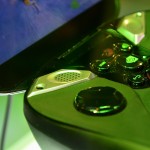  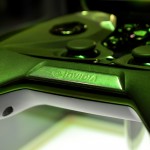 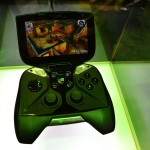       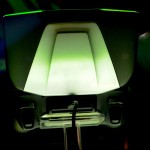  |
| Get 2 weeks of battery life with Nectar Mobile Power [VIDEO] Posted: 08 Jan 2013 04:43 PM PST If there’s one consistent complaint with Android phones, tablets, and other smart devices it’s that they can do TOO much. Which leads to the problem at hand: quickly dead batteries. There are plenty of companies offering extended batteries, backup batteries, and even unique offerings like the PowerBag, but I have yet to see something like this: “This” is Nectar Mobile Power, a unique battery backup that isn’t replenished by plugging into the wall, but instead with Isobutane Fuel Cell Cartridges. They’re full of liquid which make it somewhat of a surreal experience when you’re wondering how much juice your backup has left: simply shake the cartridge… the percent of battery juice left in the cartridge is directly proportional to the amount of liquid left.
Nectar is a product of Lilliputian Systems who have partnered with Brookstone for the launch. They’re not available at this moment, but you can currently pre-order the battery backup system for $299- each cartridge will run you an additional $10 bucks. In terms of functionality and ease of use it couldn’t be simpler. The unit has a USB port- simply use that port to connect to the device you’d like to charge and bada boom, bada bing, it begins charging. A button just to the side of the cartridge will eject it and inserting a new one is just as easy.
I can see an outrageous number of people finding the nectar beyond useful, so long as it performs as well as they claim. Going on a hike or camping? Good to go. Want an emergency stash of battery juice in your car just in case? Boom, now you ‘ve got enough battery for you and 5 friends to last for days. The whole “flammable” warning on the cartridge made me a bit nervous, but the Nectar is cleared for taking on airplanes, so you’ve got to figure it’s pretty darn safe. I’m trying to think of reasons NOT to like the Nectar, but I’m having a bit of trouble. The lone point of contention is the “green energy” debate and with cartridges you throw away that use fuel, I’m assuming a fair share of earth lovers won’t buy an emergency stash to carry in their Prius.
   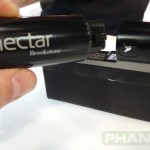 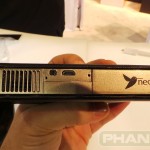 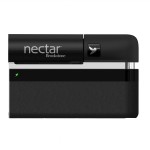    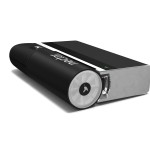  Want to get in on the action? Supposedly, CES attendees can visit Brookstone.com/nectar for a limited time to pre-order the device, but we were met with an error when loading. Either way, we’re excited to see this get to market and read the reviews that will inevitably pour in. |
| Hands-on: ZTE Grand S with quad-core S4, 1080p full HD display, 2GB RAM [VIDEO] Posted: 08 Jan 2013 04:36 PM PST Leaked weeks before CES, ZTE has finally taken the wraps off their latest high-end smartphone: the ZTE Grand S. If you read my previous post, you guys already know how excited I’ve been to get my hands on this device. Packing everything a spec whore could want in a phone, the ZTE Grand S officially packs a 1.7GHz quad-core Snapdragon S4 processor, 5-inch 2GB of RAM, 13MP rear — 2MP front facing cameras, Android 4.1.2 Jelly Bean, and 4G LTE radios. ZTE touts the device as the world’s thinnest 5-inch smartphone, something we were able to experience for ourselves in our brief hands-on with the device. Watch on. The device looked just as good as was leaked a few weeks ago. As a display enthusiast, I absolutely fell in love with the device’s 5-inch 1080p full HD display. Colors were bright and vivid, blacks were deep, viewing angles were superb, images appeared to be floating off the screen entirely. The Grand S gives the HTC Droid DNA’s SLCD3 display a run for its money — it was that good. Also noteworthy was the device’s 13MP camera. We fired off shots nice and quick, with resulting pics that were well detailed, brought to life by the device’s full HD display. What really surprised us was the quality of the 2MP front facing camera, on par with many device’s rear facing shooters. ZTE really went balls to the wall on the hardware with the Grand S and it shows. Keeping in mind the Grand S is running on extremely early software and in no way representative of the final product, we were a little discouraged to find the manufacturer’s custom UI (pretty much mandatory these days) was extremely choppy and not Project Butter nor the 1.7GHz quad-core processor could save it. After downloading and installing Nova Launcher, this were fast and fluid. While I can’t say ZTE’s UI tops out my list for “best manufacturer UI’s” (I think LG did it best), maybe we’ll see something different if/when this device hits stateside. For the finicky buyer, the ZTE Grand S comes in a wide variety of color options and finishes. Everything from glossy, to matte, pearl, and soft touch, ZTE really went out of their way to make sure the Grand S was tailored to suit just about everyone’s tastes. Due out by Q1 of this year, the device will be made available online from ZTE. Hopefully US carriers will be as impressed as we were and will begin offering the superphone here in the states in the coming months. Official press release below.
|
| First Look: Polaroid’s M7 and M10 Jelly Bean tablets [VIDEO] Posted: 08 Jan 2013 04:35 PM PST Along with their upcoming Kid’s Tablet, Polaroid had a few other Android slates on hand at CES. We took a look at the Polaroid M7 and Polaroid M10, both of which run Android 4.2 and are priced to compete with nearly everything else on the market. While you shouldn’t expect the most mind-blowing specs from the pair, they offer a decent set of features for the price. The M7 features a 1280×800 7-inch display, 1.5GHz dual-core CPU, and 8GB of internal memory (microSD expandable to 32GB). The tablet doesn’t feature a rear camera but it does carry a front-facing 2MP sensor. For around $100 you get the WiFi-only tablet.
The M10 offers an accentuated package with a 10.1-inch display at 1280×800, and quad-core processing, 16GB of internal storage (also expandable via microSD). The bigger slate carries a 2MP front-facing camera but also gets a 5MP rear sensor. Polaroid has the device priced around $200.
Both offered a pretty typical Android experience. You get stock Jelly Bean, though Polaroid’s selection of widgets create the illusion of a custom skin. While neither was terribly offensive to our tastes, neither impressed us much either. The Polaroid Kid’s Tablet was easily the most compelling of the bunch. Look for the M7 and M10 to drop later this year. |
| Eyes-on: 4K video running on NVIDIA Tegra 4 [VIDEO] Posted: 08 Jan 2013 04:10 PM PST We can easily say NVIDIA’s press conference is among the most eventful for Android fans, at CES 2013. We have a new handheld console, Grid Cloud Gaming and Tegra 4 coming. Tegra 4 is quite the beast, but just how powerful can it be? Well, we have found out it can output 4K video to a 4K TV. In our hands-on video, you can see a demo of NVIDIA’s Tegra 4 developer tablet runnin a 4K sample of After Earth’s trailer on a stunning 84-inch (3840 x 2160) television. Many tablets struggle to output even 1080p video. And with no lag or latency, we know this processor definitely has the guts to take on any task. It’s hard to give justice to such resolutions through video, but you can definitely notice how good it performs. You will simply have to trust us on the resolution quality, though – it is stunning! Hopefully one day we can all afford a 4K TV and enjoy this. |
| Sony shows off line of NFC one-touch Bluetooth speakers [VIDEO] Posted: 08 Jan 2013 04:06 PM PST In an effort to take the hassle out of pairing your wireless devices to accessories such as Bluetooth speakers, Sony is turning to NFC to make the process as easy as one touch. A lineup of products, from the ultra portable speaker we go hands-on with in the below video to a range of speaker docks and wireless headphones, all feature the capability. But the functionality extends beyond speakers. Sony is also featuring a 1TB hub which can quickly collect photos and other media from your Xperia handset or other device. In our time with the different devices we had some hit-and-miss experiences. With Sony’s handsets, pairing was seamless. With a Galaxy Nexus, the process wasn’t so painless. Theoretically, however, the accessories will work any NFC-ready Android handset. The Ultra Portable Bluetooth Speaker retails for around $60 bucks. Prices vary on other models. 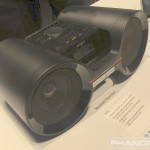 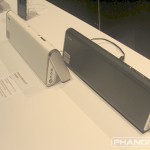 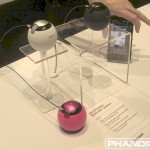 
|
| Sprint issues quick software upgrade for LG Optimus G Posted: 08 Jan 2013 03:18 PM PST The LG Optimus G on Sprint will is getting a software upgrade, folks! Well, it won’t be the most exciting patch you’ll have ever applied but we can’t be mad at continuous support. The upgrade does change a couple of things, such as an upgraded visual voicemail experience and improvements to the phone’s battery life. Bug fixes are aplenty, too. The list of fixes include the intermittent freezing issues, intermittent device resets during YouTube playback, removal of invalid info in Replay All email responses, the Mobile ID icon being changed to the Sprint ID icon, and a fix for the device’s power up issues after suffering an unsuccessful WiFi connection. The upgrade will be going out in a staggered process, of course, but that’s par for the course by now. You won’t have to wait longer than a week and a half if your device doesn’t pull it down right away, though. If the notification hasn’t made its way to your device yet then you can try your hand at forcing it. Just head to the Settings > About Phone menu on your device to check for a software upgrade and you’ll be on your way. [via Sprint] |
| ViewSonic Smart Monitors take Android to desktop with 22-inch, 24-inch models Posted: 08 Jan 2013 02:31 PM PST Have yourself a look-see at these two Android huge devices: the ViewSonic VSD220 and ViewSonic VSD240. At 22-inches and 24-inches, they’re certainly not your typical Android device. Best suited for use as a touchable monitor or countertop entertainment/resource, we can see these catching on in the kitchen if priced right. Specs on the 24-inch model aren’t currently available, but we’re guessing it’s mostly the same specs only 2-inches bigger. That being said, expect to find:
It comes with a wall mount but the kickstand is more than usable and your most likely scenario considering it’s countertop scenario status. ViewSonic includes their own custom app on the monitors but you’ll be happy to learn that they’re also equipped with the Google Play Store. That means all the apps and games you’ve downloaded elsewhere will be available on your monitors and you’ll have unfettered access to everything the Google Play store offers. Time to find some good cooking and recipe apps!
These monitors definitely enter an area where Android has yet to see success. It started with phones, it moved into tablets, it merged into phablets, but televisions/monitors/automotive and some other key areas largely go unnoticed. Will the ViewSonic Smart Monitors have you considering a countertop Android experience? If not, what (if anything) would push you to think about that option?
|
| Firefox update brings Google Now Search widget compatibility, faster JavaScript performance Posted: 08 Jan 2013 02:09 PM PST Firefox for Android has gotten a new upgrade alongside changes made to Mozilla’s desktop browser. In mobile, users can now expect faster JavaScript performance via the IonMonkey compiler. Mozilla didn’t go into too much detail about how much faster performance would be, but as it’s already quite good we can’t say we’d notice anyway. Beyond that, the upgrade brings new compatibility with the Google Now Search widget, meaning searches should automatically open in the Firefox browser without fail. Finally, Mozilla has proudly exclaimed that Firefox is now the first mobile browser with Safe Browsing mode enabled. Other changes and fixes have been made that most of us might not care about from the standpoint of a typical user. Support for the window.devicePixelRatio DOM has been added, better fonts support is in tow, Mozilla has fixed the browser’s tendency to load insecure elements on secure pages and more. You can find more details regarding today’s upgrade over at the release notes page if you want. If you don’t want to go through all that trouble, though, just head to the Google Play Store and initiate the free download. |
| PhanBot Android speaker makes debut at CES 2013 [VIDEO] Posted: 08 Jan 2013 01:54 PM PST The Android robot is green. But if you see a blue Android robot? You know it’s the Phandroid robot… the PhanBot. Our friends at Accessory Power and Go Groove have taken their awesome PalBot, which we previously gave great reviews, and dedicated a special blue edition to yours truly: Phandroid. The product and details are still being finalized, for example the eyes will glow white like the Phandroid logo, but Accessory Power will actually be selling these. And of course when they’re available we/you will be first to know. You can bet your bottom dollar, or you’re top dollar if you’re feeling lucky, that we’ll be doing a full review (5 stars?) and giveaway so check back often for the chance to snag the first ever PhanBot speaker the world has seen.
If you’re not familiar with the PalBot and PhanBot, they’re desktop speakers that work with a neatly retractable wire you can plug into any 3.5mm audio jack. That’s obviously a great fit for mostly any Android device: simply play your music, turn up the volume, and rock out. It plays LOUD and with great quality. Read my full PalBot review for all the info. If you’re at CES stop by Accessory Power’s booth in South Hall Upstairs and say hi to our little Phan friend. If you’re following from home, let us know in the comments what you think about Phan Bot!
|
| HTC’s Q4 profitable, but by very slim margins Posted: 08 Jan 2013 01:06 PM PST While the excitement of CES has come over everyone this week, one firm is having to start 2013 off on a sour note. HTC has posted its worst profit numbers since 2004 as the company only generated only $34.5 million in profit in Q4 2012. It may be difficult to feel sorry for a company that’s still posting a profit, but the arrow has been pointing at a bit of a downward angle for a little while now. HTC first started feeling pains back in late 2011 when the industry began to accelerate at an alarming rate. The company wasn’t in much trouble then, but Samsung had quickly become the “the one” in the Android space, and the allure of HTC’s brand was beginning to fade. To combat this, HTC’s One series was introduced in early 2012 and it looked to restore that sense of innovation that’s always been associated with the Taiwanese OEM. Results weren’t expected to be better overnight, of course, but it seems HTC’s efforts only slowed the bleeding. HTC went from making $133 million in Q3 to this point, and this same quarter last year netted the company over $300 million. These trends are no doubt troubling, and if HTC doesn’t do anything to steal some thunder back from the now-unstoppable Samsung then the landscape of the smartphone industry will look drastically different by the time 2014 hits. HTC’s DROID DNA wasn’t fully accountable in these numbers as the device launched in the middle of the quarter, but even if it does well I’m not sure HTC can survive on the performance of one phone. You also have to consider the presence of AT&T’s HTC One X+. CEO Peter Chou has already conceded that the company isn’t in a great spot right now, but he hopes a planned surge of marketing will help restore brand awareness, image and excitability as it looks to climb back into a respectable position among the greats of the smartphone world. [via WinSource] |
| Hands-on: Sharp’s IGZO-powered smartphones [VIDEO] Posted: 08 Jan 2013 12:57 PM PST Sharp is hoping to revolutionize mobile displays with their IGZO technology, a new sort of screen that features in the company’s latest smartphones. The Sharp Aquos Phone SH-02E has been available in Japan for a little while now and sports a 4.9-inch 720p display. The handset is powered by a quad-core 1.5GHz Snapdragon S4 Pro processor. It also carries an impressive 16MP camera. Sharp’s second Aquos Phone with an IGZO display will be available this March in Japan and features a similar spec sheet to the SH-02E. The real selling point of both phones is the display. It boasts better battery life, improvements in almost all visual areas, and enhances touch responsiveness. It all adds up to pretty nice screen experience. The improved responsiveness was noticeable when scrolling through video playback. Sharp plans to push its IGZO technology pretty heavily moving forward. We’ll be seeing more phones and tablets and eventually larger screen sizes such as monitors and TVs. The future even holds the promise of flexible displays that could deploy similar technology.
There is no info on a potential release of these Sharp models outside of Japan, but based on their track record it seems fairly unlikely. But IGZO itself could make its way to other smartphone brands, including Android devices and even the iPhone (Sharp is the primary provider of iPhone displays currently). |
| Hands-on: Nvidia Grid Cloud Gaming at CES 2013 [VIDEO] Posted: 08 Jan 2013 12:28 PM PST A few nights ago Nvidia CEO Jen-Hsun Huang talked a little bit on their cloud gaming “Grid,” powerful stacks of Nvidia GPU’s cranking out games for streaming on multiple devices. No longer will consumers have to worry about spending thousands of dollars for a high-end gaming rigs just to support their gaming addictions. Smartphones, televisions, anything and everything is fair game. Essentially, as long as you have an internet connection, you can play mega blockbusters like Black Ops 2 on full graphical settings, settings that would melt your current PC or handheld. Revolutionary? Sure sounds like it. We hit the floor of CES running, hoping to get our own hands on with the service to see if it could live up to the hype. Sure, playing Assasin’s Creed 3 straight from your TV or Android handset is all good and dandy, but would latency issues keep Nvidia’s Cloud Gaming from greatness? Check out our video and see for yourself: So, after putting the Nvidia Grid Cloud Gaming to the test across multiple games, it appears Jen-Hsun and Co. have almost completely obliterated the lag normally associated with services like Onlive. In fact, latency was so minimal, we were able to play precision games like Street Fighter 4 — where timing is life or death — was virtually indistinguishable from playing on a console. Our only area of concern is that games don’t have the crispness (resolution) as when running natively from a home console or handheld. Almost as if you’re watching a video stream of someone else playing a game. Still, game titles with extra flashy special effects like light bloom, super high-res textures and high polygon counts — the real graphical meat and potatoes — look nothing short of stunning on smaller devices where artifacting is so small, it’s virtually invisible. You can watch Need for Speed Most Wanted running at its highest PC settings, streaming and playable on the HTC One X (oddly branded for T-Mobile) below. As a kid, I never would have dreamed something like this would have ever been technologically possible. Nvidia is onto something downright revolutionary with Grid Cloud Gaming, challenging consumers to change the way they play, and what they thought could ever be possible with video games. Imagine a future where having the world’s highest-end graphics are easily accessible from your home, or even a hotel. Nvidia is paving the road, making this dream a reality. [via GameFans] |
| Hands-on: Polaroid’s Android-powered Kid’s Tablet [VIDEO] Posted: 08 Jan 2013 12:26 PM PST We’ve seen quite a few tablets geared towards children recently, but the latest to enter the fold was a bit surprising. Polaroid, the company traditionally known for its instant cameras, whipped up their own kid-safe slate and had it on hand at CES. We got to take a look during our time on the show floor. Unlike Polaroid’s other tablet options (low-cost 7-inch and 10-inch models running Android 4.2), the Kid’s Tablet doesn’t feel like it will break under the pressure of your finger’s touch. That’s the point, though. The 7-inch screen is cased within a rubberized frame that provides plenty of grip for the little ones while keeping the internals safe. Those internals aren’t the best, as you might expect, but they are serviceable. You get a 1GHz processor, 2MP camera, and Android 4.0. Polaroid has included a slightly customized interface with their own selection of Windows Phone-esque widgets and plenty of content for the kids. Apps, video, and games should keep them plenty busy. A child-safe browser is also included (and at default blocked Phandroid.com. Are we really not mom and dad approved?). One of the best features for parents is the inclusion of a lock switch on the bottom of the device. This effectively turns off input to the tablet, meaning a movie won’t be interrupted but an eager child accidentally hitting the home button. Other controls are nice and big, perfect for young hands to explore. The Polaroid Kid’s tablet will be available this spring for a price of $149.99. If you have children in your life constantly toying with your expensive gadgets, it might be worth considering when it does drop.
|
| You are subscribed to email updates from Android Phone Fans To stop receiving these emails, you may unsubscribe now. | Email delivery powered by Google |
| Google Inc., 20 West Kinzie, Chicago IL USA 60610 | |

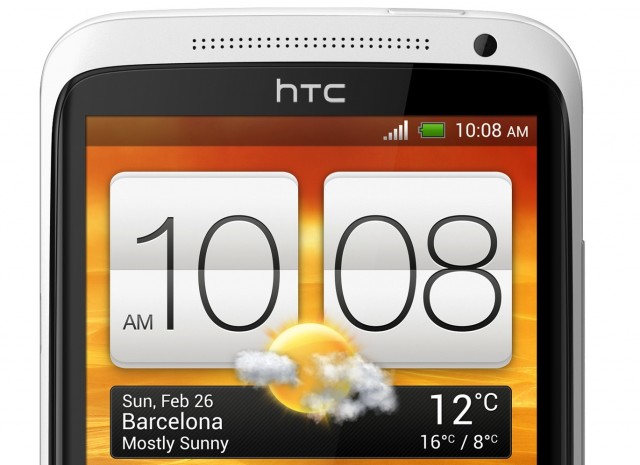


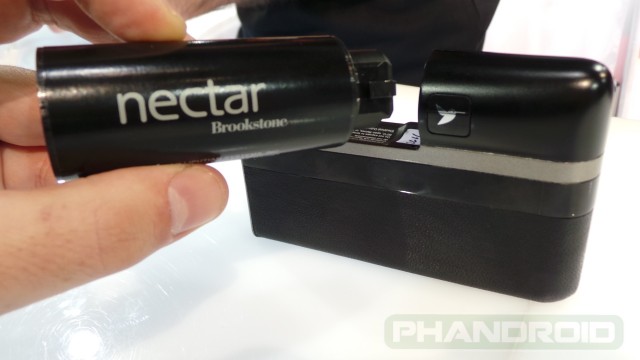
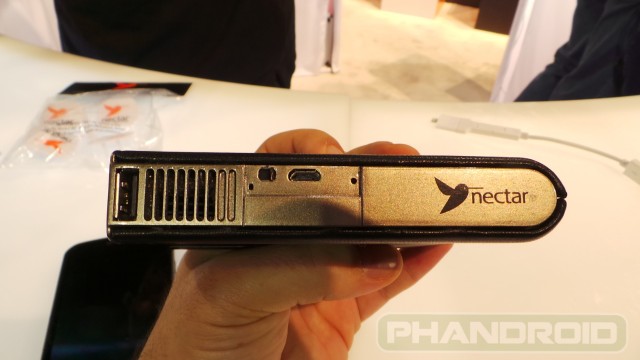

















No comments:
Post a Comment